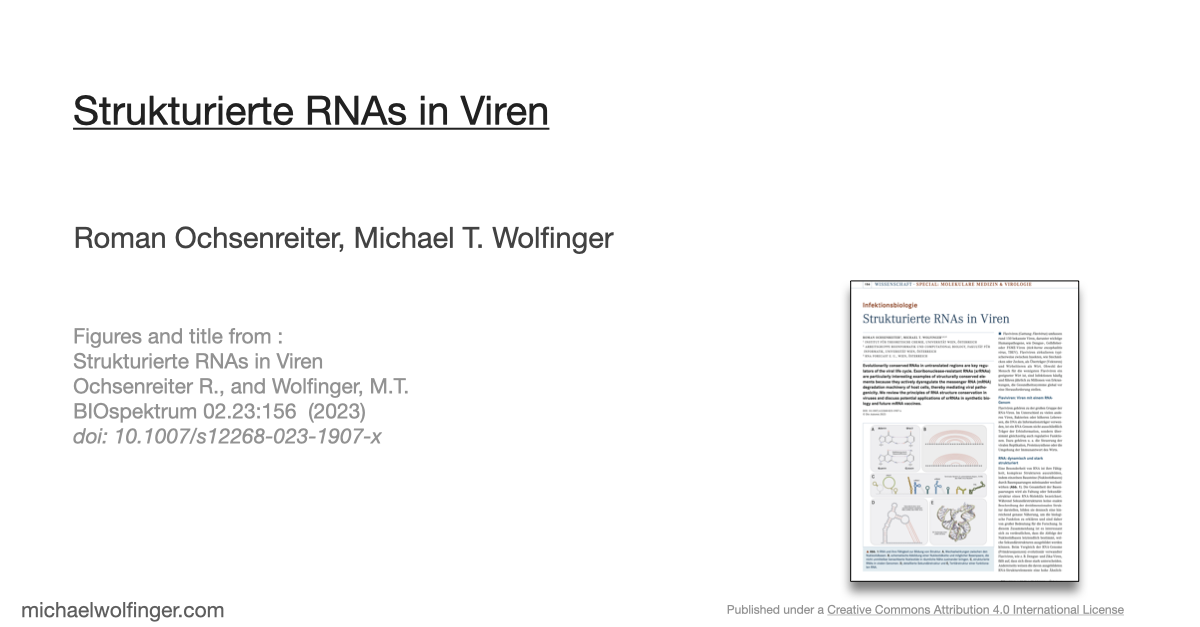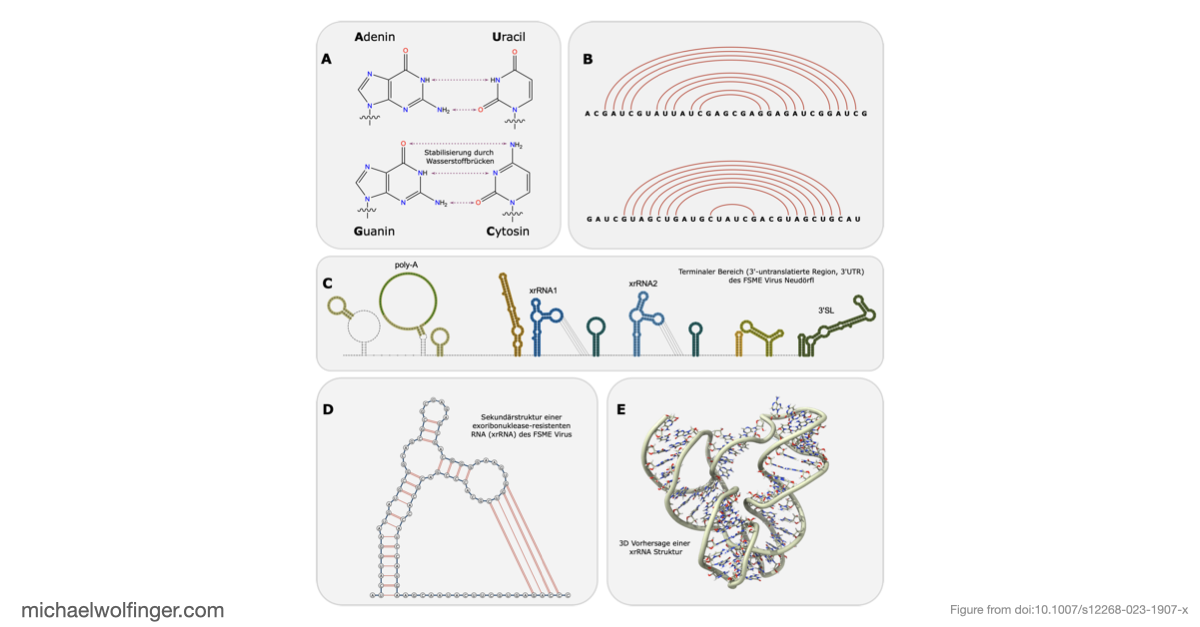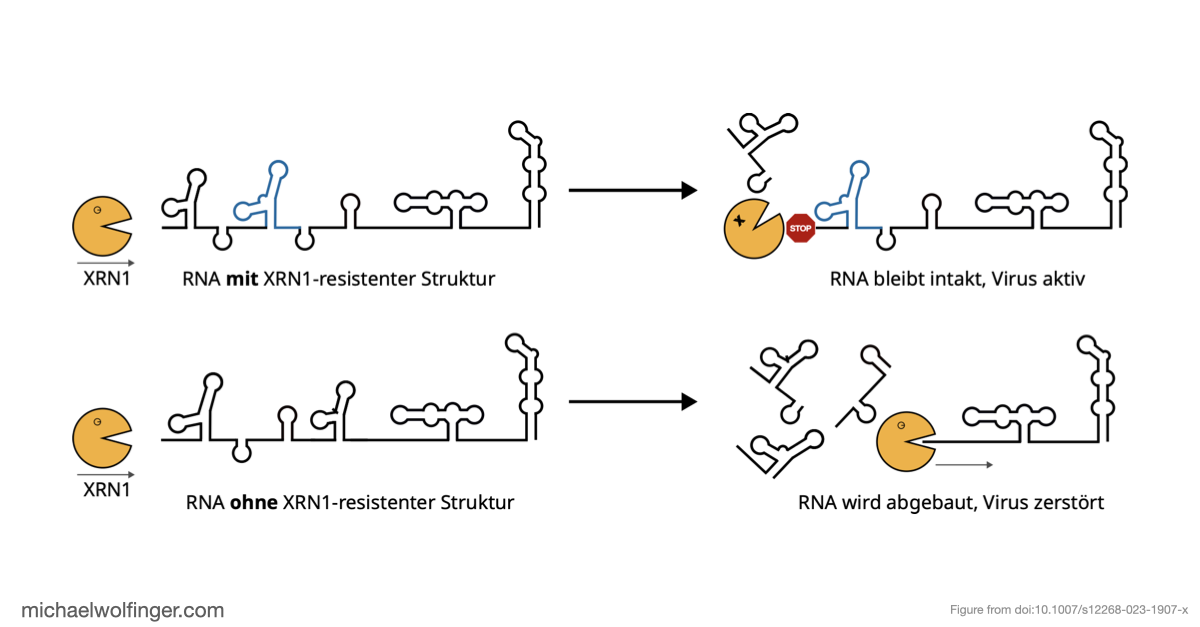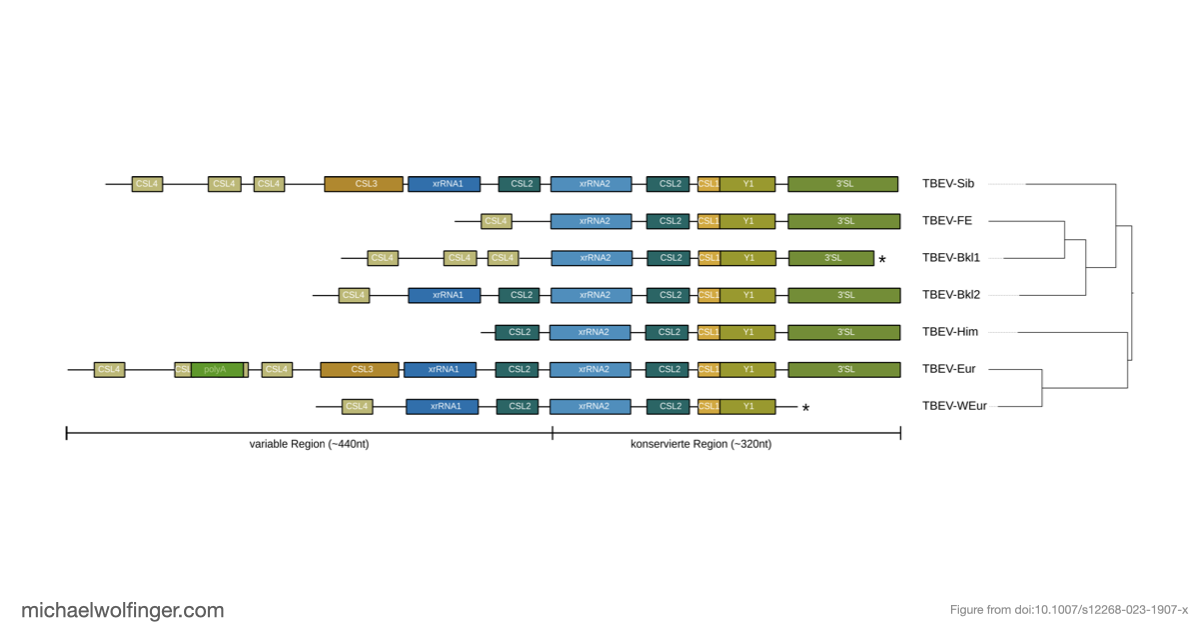Strukturierte RNAs in Viren (in German)
In this mini-review we discuss the concept of RNA structure conservation in viruses, using exoribonuclease-resistant RNAs from flaviviruses as prominent examples
Exoribonuclease-resistant RNAs are a type of RNA molecule that possess unique properties in the 3' untranslated region (3'UTR) of flaviviruses, a family of RNA viruses that includes notorious pathogens such as dengue virus and Zika virus. The 3'UTR is a non-coding region of the viral RNA genome that plays crucial roles in viral replication and immune evasion. Exoribonucleases are cellular enzymes that degrade RNA molecules, including viral RNA, as part of the host's antiviral defense mechanism. However, some flaviviruses have evolved to contain specific sequences in their 3'UTR that confer resistance to exoribonuclease degradation.
These exoribonuclease-resistant RNAs (xrRNAs) in the 3'UTR of flaviviruses have gained attention as potential therapeutic targets for RNA-based antiviral strategies. By utilizing the unique properties of xrRNAs, we can design RNA molecules that mimic the viral sequences in a synthetic biology context. Utilizing the distinctive features of exoribonuclease-resistant RNAs represents a novel approach in the development of antiviral RNA therapeutics, and may serve as a regulatory tool for future mRNA vaccines.
In this mini-review, we delve into the biophysical principles underlying exoribonuclease-resistant RNAs, and elucidate their potential applications in innovative RNA therapeutics.
This work relevant for a One Health systemic view as it underscores the interconnectedness of human, animal, and environmental health. The study delves into the conservation of RNA structures in viruses like dengue and Zika, which are transmitted by mosquitoes. By exploring the potential of xrRNAs as therapeutic targets, the research paves the way for the development of novel, broad-spectrum antiviral strategies that can address disease control and prevention across multiple levels of the ecosystem. Ultimately, this aligns with the One Health approach by acknowledging and addressing the intricate relationships between different facets of health within our ecosystem.
Figures and Data
Citation
Strukturierte RNAs in Viren (in German)
Roman Ochsenreiter, Michael T. Wolfinger
Biospektrum 29(2):156-158 (2023) | | doi:10.1007/s12268-023-1907-x | PDF



